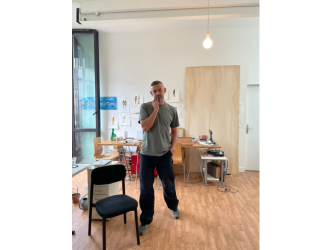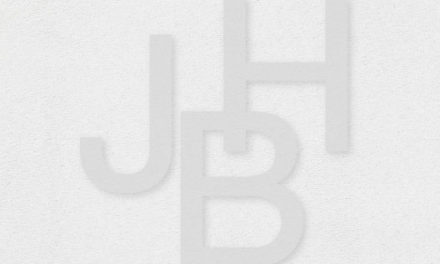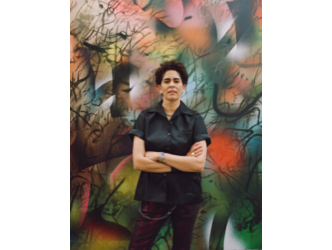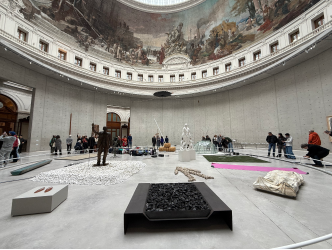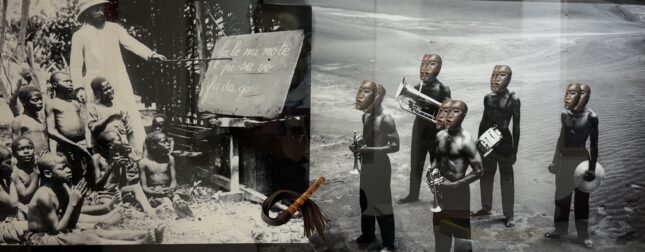
Kevin Kabambi
Arab World, focal point
As the Chinese art market becomes increasingly insular, it is the Arab world which has become the new focal point, the new El Dorado of the contemporary art market. In Jeddah, Saudi Arabia, the second iteration of the Islamic Arts Biennale, a not-for-profit exhibition, has just opened, drawing a large crowd of international contemporary art players despite its relatively narrow focus. Through May 25, it will showcase 500 ancient and contemporary works relating to the Quran.
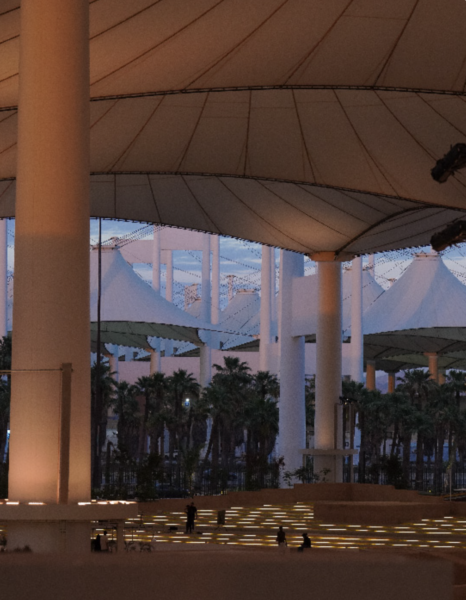
Islamic Biennial
Saudi Arabia
It must be said that Saudi Arabia has major ambitions in the museum sector. Relatedly, Sotheby’s and Christie’s have officially announced their plans to set up operations in the country. The auction house owned by François Pinault has even partnered with the biennale to “demystify the complex art ecosystem through interactive activities.”
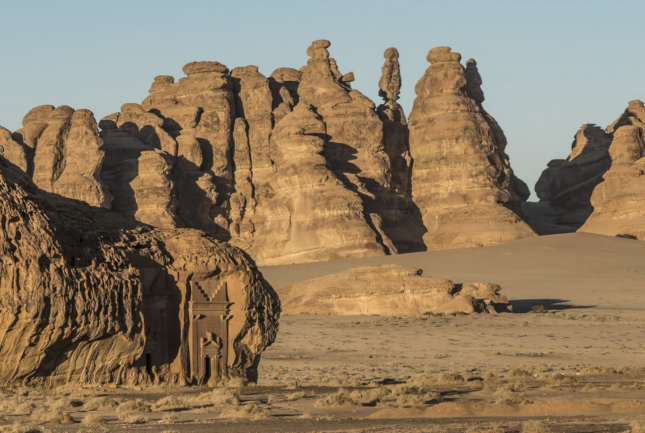
Al Ula
UAE
Meanwhile, Art Dubai, the Middle East’s leading art fair upcoming on April 18-20, has announced a new direction headed by Alexie Glass-Kantor and Dunja Gottweis who previously worked for Art Basel. Plus, Abu Dhabi based sovereign wealth fund has injected no less than $1 billion into Sotheby’s. Rumors had suggested that the Abu Dhabi Art Fair might be taken over by Art Basel’s Swiss organizers. Nothing has been confirmed so far.
Guggenheim AD, Qatar ‘s Art Mill Museum

Guggenheim AD
In the Emirati capital, right next to the Louvre, The Guggenheim Abu Dhabi building designed by the Prtizker Prize winner Frank Gehry, is set to be inaugurated by the end of 2025. (See here an interview of Frank Gehry)
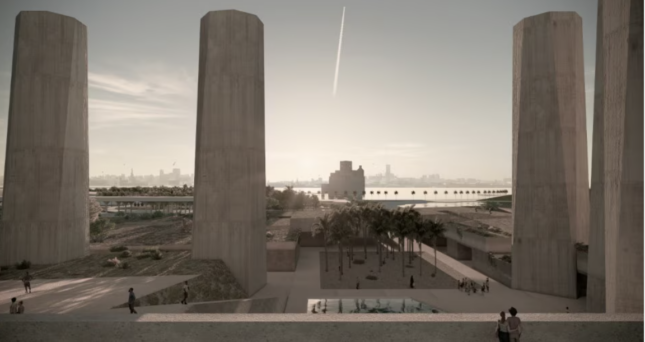
Art Mill Museum
In Qatar, the Art Mill Museum, a modern and contemporary art museum designed by another Pritzker Prize laureate, Alejandro Aravena, is set to open in 2030. It could house, among others, Paul Cézanne’s “The Card Players,” one of the highest profile art market sales in recent years, rumored to have been acquired for $250 million. (See here an interview of Alejandro Aravena)
Marrakech Macaal
On the other side of the Arab world, in North Africa, Marrakech was bustling at the end of January. Firstly, because the Museum of Contemporary African Art Al Maaden (MACAAL), the only private contemporary art museum in the country, reopened after a year and a half of renovations. Owned by the Lazraq family, who made their fortune in Moroccan real estate, the museum now showcases a wide ranging collection of 250 contemporary African and African diaspora artworks, beautifully hung in a 1,000 square meter space.
1-54 Marrakech
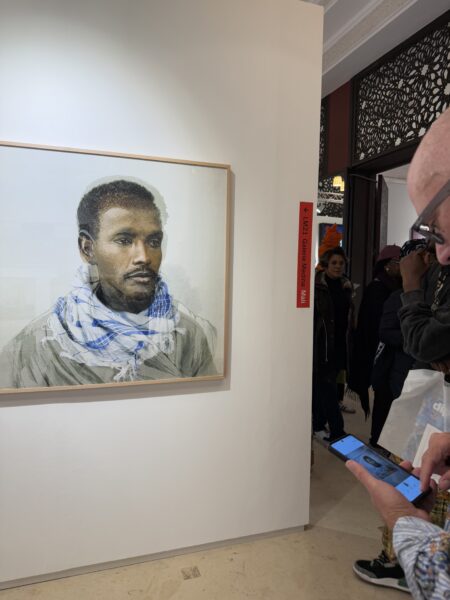
1-54 Marrakech
But most of all, the city was bustling due to an event that succeeds in attracting a number of collectors worldwide, in spite of its modest size: the 1-54 Marrakech art fair, held this year from January 30 to February 2. With 30 participants, the event was primarily held at the palatial La Mamounia hotel. The concept for the fair was launched in 2018 by Touria El Glaoui, the daughter of renowned Moroccan painter Hassan El Glaoui (1923-2018). The fair also has iterations in London, New York and Hong Kong. (The “54” in its name indicates the number of countries that make up Africa.)
African Art
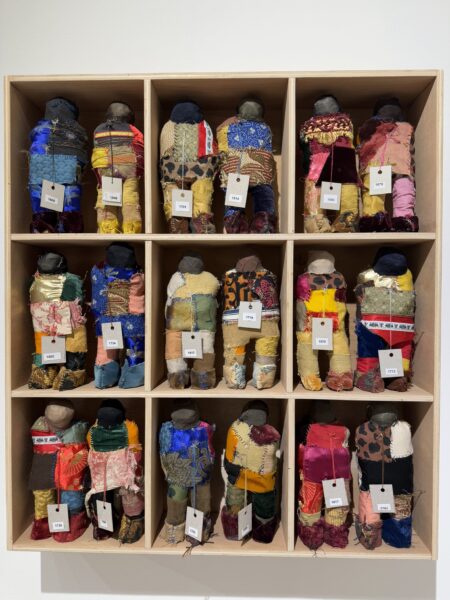
Alex Burke (Loeve&Co)
At first glance, this sixth edition felt somewhat jarring, set against the luxury hotel’s mosaics amidst harsh lighting. But it quickly revealed works rarely seen at other fairs.
To appreciate is to support.
To support is to donate.
Support JB Reports by becoming a sustaining Patron with a recurring or a spontaneous donation.
Touria El Glaoui
“Many African artists want to showcase their work on the continent, in Marrakech,” explained Touria El Glaoui. “Take painter Amoako Boafo, for instance. It was the artist himself who wanted to be at 1-54,” she said.
Amoako Boafo
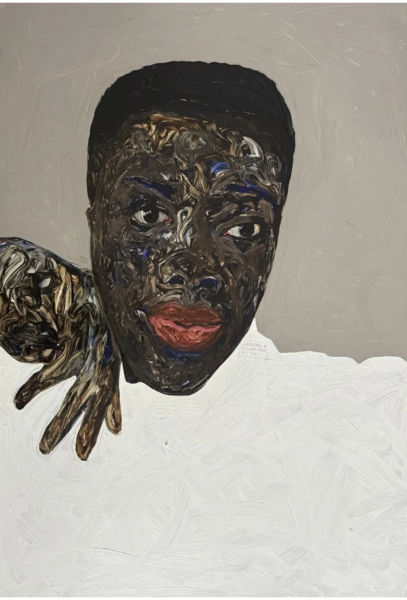
Amoako Boafo
Boafo (born in 1984) is an outlier at the fair, seeing as he is a star of the international market. The Ghanaian artist creates portraits of people of Black People, in vibrant, high-contrast colors. The faces are traced by his fingers in direct contact with the canvas. His pieces can be bought for up to $450,000 at Gallery 1957 from Ghana, but his work has been the subject of heavy speculation in the past.
Marwan Zakhen
In December 2021, one of his paintings sold at auction for €3 million in Hong Kong auction. Then more recently, an oil on paper, a portrait of a man, sold for €121,300 in London. “Demand for Amoako isn’t dropping. In fact, during 1-54, we sold one of his paintings to the Tate Modern,” said Marwan Zakhen, the 2016 founder of the now well-known gallery 1957 in Accra.
Aissa Dione
Other leading galleries in the African art market, such as Cécile Fakhoury, based in Paris but also Abidjan and Dakar, did not attend. However, the smaller outfits offered new and interesting discoveries, such as Aissa Dione. The founder of Galerie Atiss in Dakar, Dione simultaneously pursues an activity as a textile designer. In Marrakech, she presented the work of Lagos-based artist Yadichinma Ukoha-Kalu (born in 1995), who creates figurative scenes in woodblock print that she then embroiders (priced at €2,000). Her work has been exhibited at, among other venues, South Africa’s renowned Zeitz MOCAA.
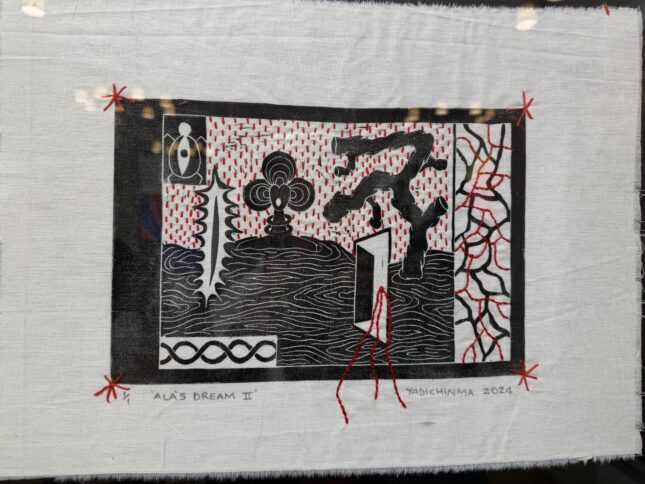
Yadichinma Ukoha-Kalu
Igo Diarra
Igo Diarra traveled from Mali, where he is an editor as well as the founder of Galerie Medina. At 1-54, he exhibited works featured in the photo biennale Les Rencontres de Bamako, which concluded on January 16. Among them were large-format photographs by Kevin Kabambi (born in 1999) from the Democratic Republic of Congo, who also exhibited at the Lubumbashi Biennale in 2022. His large-format images are photomontages divided into two sections. On one side are archival photos of schooling in Africa and on the other are people wearing traditional African masks that are the property of Western institutions (for sale at €3,500). These works address the pressing issues of colonialism and restitution.
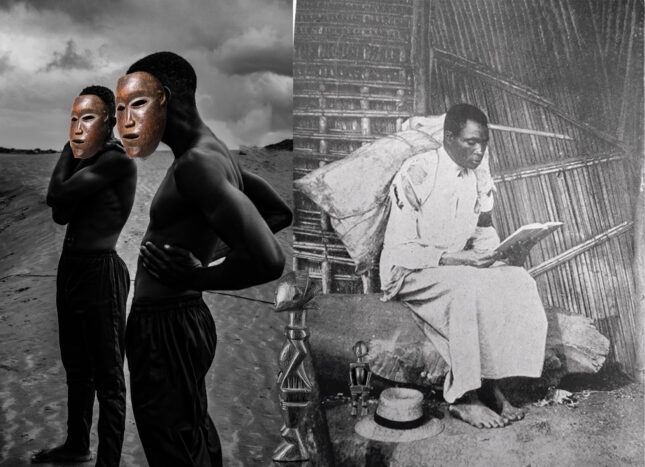
Kevin Kabambi
Kalhath Foundation
The Indian Kalhath Foundation, based in Lucknow, Uttar Pradesh, aims to preserve the country’s embroidery heritage and facilitate collaborations with global artists. In 2024, Casablanca painter Amina Benbouchta (born in 1963) during an Art residency used Kalhath artisans to embroider her compositions.
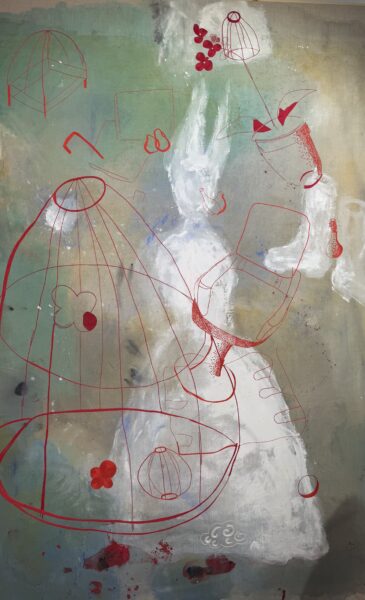
Amina Benbouchta
These were on display at 1-54. Chairs and dresses floating in the air, a friendly tentacled monster: her compositions seem to come out of a contemporary version of “Alice in Wonderland” (the works sold for between €4,000 and €13,000).
Paris Noir at Pompidou
Finally, among the few French galleries present was Loeve & Co. Their booth featured works by three artists that we will meet again as of March 19 at the highly anticipated “Paris Noir” exhibition at the Centre Pompidou, which will explore the influence of Black artists in France between 1950 and 2000. At the end of the fair, gallery co-founder Stéphane Corréard was particularly pleased with transactions ranging from €7,500 to €90,000.
Stéphane Corréard
“That’s a big departure from the “wait-and-see” attitude that predominates in Paris.” He was presenting the excellent paintings of the Haitian artist Roland Dorcely (1930-2017). His canvases, which oscillate between abstraction and figuration, feature interwoven, sinuous forms encircled in black. Among vibrant flat color fields, one can discern women, hands and plants.
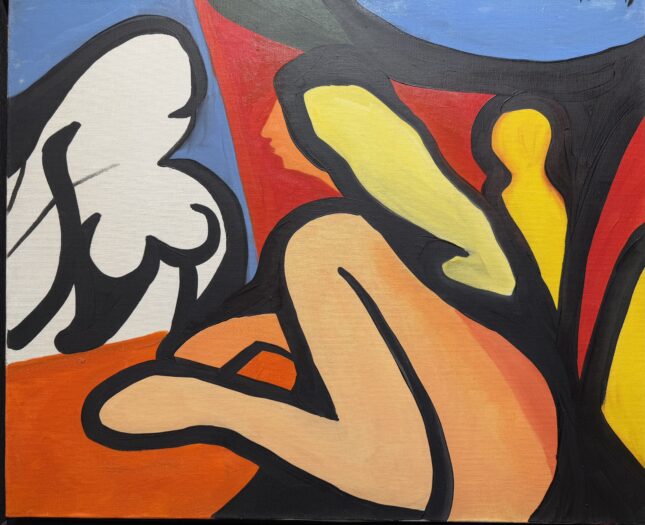
Roland Dorcély
Dorcely’s works are in the collections of MoMA and the Centre Pompidou, though his auction record has stagnated at €29,000. Writing to a patron in the early 1960s, Dorcely lamented, “I’ve tried to do the rounds of the galleries and, well, I have to tell you that one out of three dealers wouldn’t even look at my canvases. They expected me to show up wearing a loincloth, a quiver, and arrows.”
If the Pompidou exhibition gives his paintings the recognition they deserve, Roland Dorcely may finally achieve his rightful place in the art market.
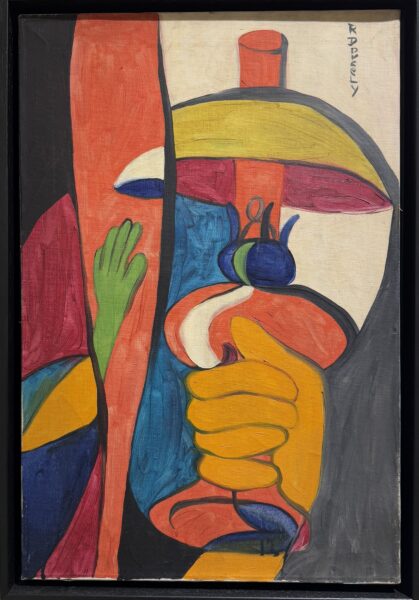
Roland Dorcely
Support independent news on art.
Your contribution : Make a monthly commitment to support JB Reports or a one off contribution as and when you feel like it. Choose the option that suits you best.
Need to cancel a recurring donation? Please go here.
The donation is considered to be a subscription for a fee set by the donor and for a duration also set by the donor.


